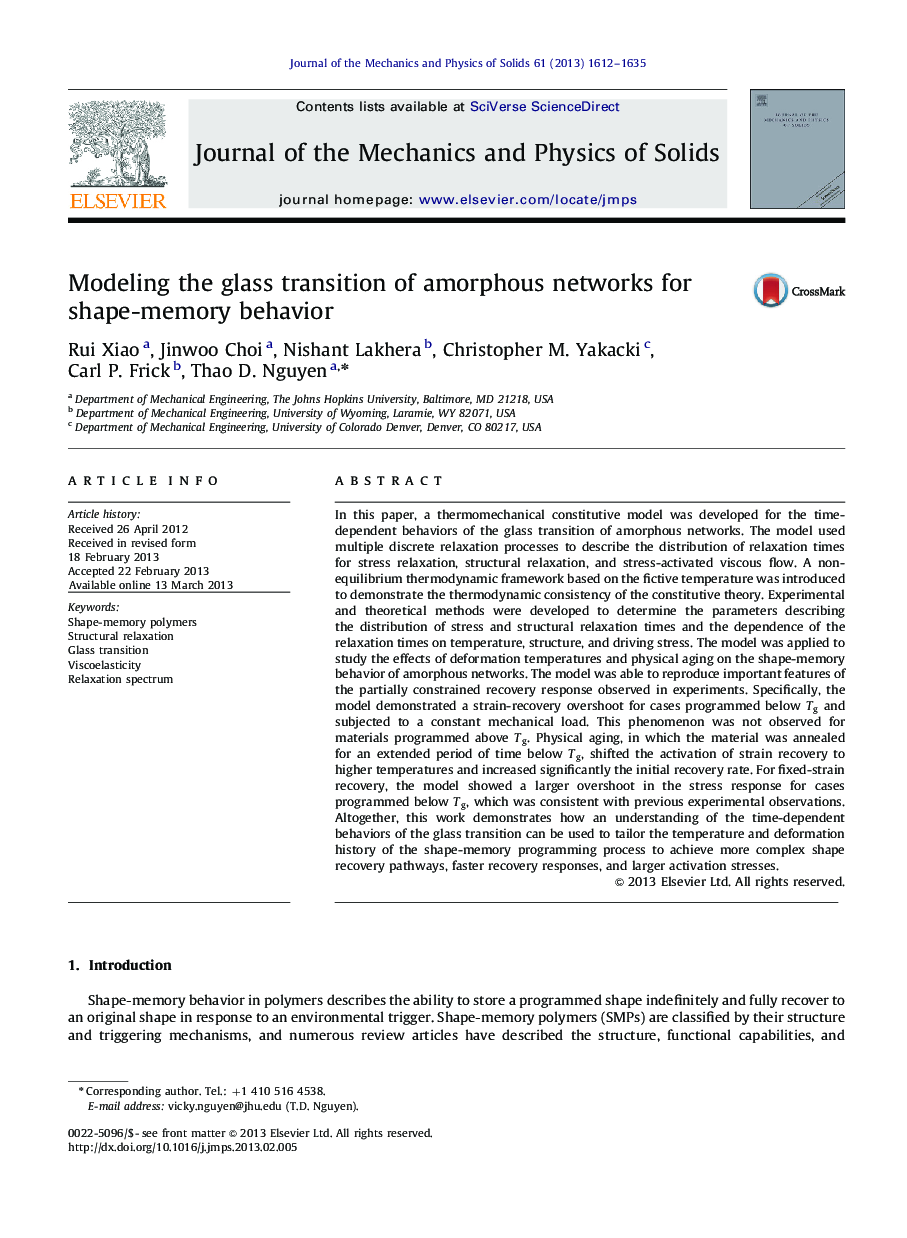| کد مقاله | کد نشریه | سال انتشار | مقاله انگلیسی | نسخه تمام متن |
|---|---|---|---|---|
| 793206 | 1467087 | 2013 | 24 صفحه PDF | دانلود رایگان |

In this paper, a thermomechanical constitutive model was developed for the time-dependent behaviors of the glass transition of amorphous networks. The model used multiple discrete relaxation processes to describe the distribution of relaxation times for stress relaxation, structural relaxation, and stress-activated viscous flow. A non-equilibrium thermodynamic framework based on the fictive temperature was introduced to demonstrate the thermodynamic consistency of the constitutive theory. Experimental and theoretical methods were developed to determine the parameters describing the distribution of stress and structural relaxation times and the dependence of the relaxation times on temperature, structure, and driving stress. The model was applied to study the effects of deformation temperatures and physical aging on the shape-memory behavior of amorphous networks. The model was able to reproduce important features of the partially constrained recovery response observed in experiments. Specifically, the model demonstrated a strain-recovery overshoot for cases programmed below TgTg and subjected to a constant mechanical load. This phenomenon was not observed for materials programmed above TgTg. Physical aging, in which the material was annealed for an extended period of time below TgTg, shifted the activation of strain recovery to higher temperatures and increased significantly the initial recovery rate. For fixed-strain recovery, the model showed a larger overshoot in the stress response for cases programmed below TgTg, which was consistent with previous experimental observations. Altogether, this work demonstrates how an understanding of the time-dependent behaviors of the glass transition can be used to tailor the temperature and deformation history of the shape-memory programming process to achieve more complex shape recovery pathways, faster recovery responses, and larger activation stresses.
Journal: Journal of the Mechanics and Physics of Solids - Volume 61, Issue 7, July 2013, Pages 1612–1635